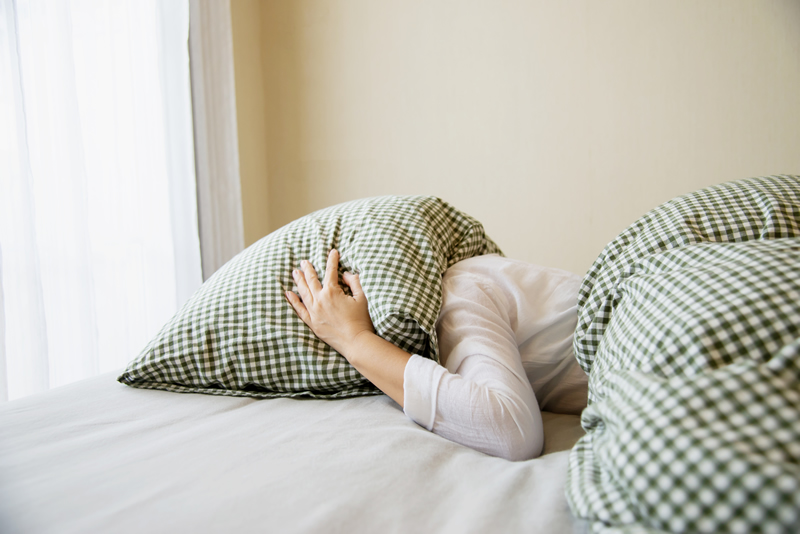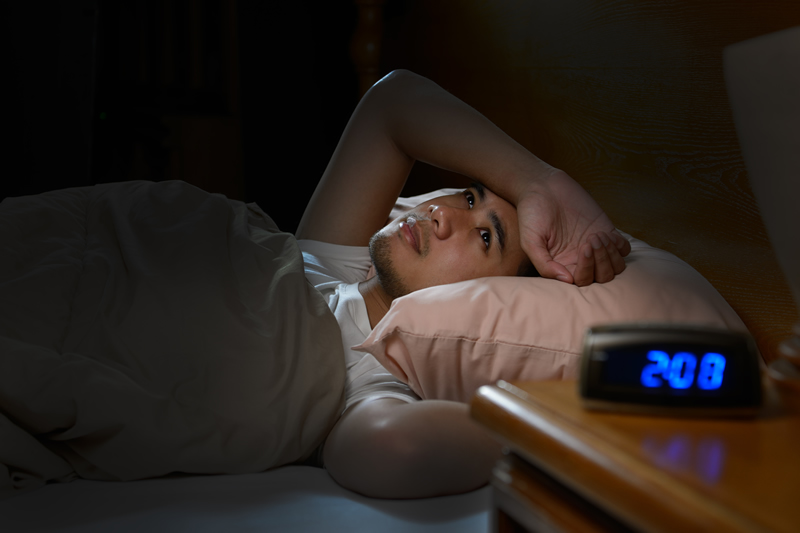Are you one of the millions of people who suffer from insomnia? The good news is, insomnia can often be treated with a few tweaks to your daily habits—and no medication! Check out this article for proven tips on getting yourself back on a normal sleep schedule in no time.
1. Use the Bed Only For Sleep and Sex.
On those days when you’re really tired and still stuck with things to do, it’s easy to make your bed into your office and do everything there—eat, work, read, play video games, etc. Unfortunately, this means that you start to see your bed as a study, or a dining table, or a combination of that and other things. If you condition yourself to stay awake on your bed, you will stay awake—even when you’re trying to sleep. Simple psychology says you need to only use your bed for sleep and sexual activity, and in turn, you will only associate your bed with those activities. As a result, you will fall asleep much faster.
2. Target The Right Amount of Sleep.
Depending on your age, you need a specific amount of sleep every night to feel well rested and be able to function normally every day. Take a look at this chart to find out where you fall:
| Age | Hours of Sleep Needed/Night |
| Infant | 12 to 15 |
| Toddler | 11 to 14 |
| Pre-Teen | 9 to 11 |
| Teen | 8 to 10 |
| Young Adult | 7 to 9 |
| Senior | 7 to 8 |
Data from: http://denver.cbslocal.com/2015/02/02/how-much-sleep-do-you-really-need-it-depends-on-your-age/
3. Don’t take long naps.
This is a pretty simple one, but if you regularly take power naps that are three hours long, you’re setting yourself up for hours of tossing and turning when you try to get your eight hours later on. Instead of taking that mid-afternoon nap, just stay up for a few hours more. Distract yourself by reading a book (in an easy chair, not on your bed), or by catching up on some work assignments. Choose something that will make the time fly by so you’ll be ready to tumble into bed and reach dreamland before your head hits the pillow.

4. Exercise!
Nothing gets you tuckered out like a hard hour of workout. Make sure you do it at least a couple of hours before going to bed, though. Otherwise, you’ll still be in an active mindset when you’re trying to knock yourself into a solid night’s sleep. Getting 30 minutes to 1 hour of exercise five times a week has numerous other health benefits as well, so by doing this you’ll be killing multiple birds with one stone.
5. Crank down the thermostat.
“When you go to sleep, your set point for body temperature—the temperature your brain is trying to achieve—goes down. Think of it as the internal thermostat.” ~ H. Craig Heller, PhD
Yes, it’s true: a cold room temperature can be that extra kick you need to get to sleep. For best results, experiment with temperatures between 60 to 75 degrees Fahrenheit and see which one is most comfortable for you. Be sure to grab a lot of blankets. Remember, your goal is to get to sleep. Turning into an icicle definitely won’t get you there.
6. Add some white noise to your sleep routine.
It may seem like any type of noise will keep you awake instead of sending you to sleep. However, white noise can help relax and soothe you, which makes your body more open to sleep. Getting to sleep is all about creating a consistent environment—be that through the use of white noise, a nightlight, a cool temperature, or a combination. When a loud noise startles you into waking, it’s not the noise itself that wakes you—it’s the fact that the noise is different from the noises (or lack thereof) you’ve been surrounding yourself with for sleep. If you’re still suffering from insomnia after trying other proposed solutions, white noise may be your saving grace.
Bonus: Use melatonin.
Oftentimes, you don’t need to turn to medications. But if absolutely nothing else is working, melatonin can be a godsend for your sleeping needs. It’s a hormone that is known to regulate sleep cycles. It occurs naturally in foods and people, so it’s a better option for you than sleeping pills (which are more artificial and often unnecessary). Melatonin is something you can feel completely safe taking—just make sure you take the right dose. Start small until you find something that works for you, and never exceed the maximum dose of 5 mg.
© 2021 by NewsBucket.org, an LiVenture.
All rights reserved. No part of this document may be reproduced or transmitted in any form or by any means,
electronic, mechanical, photocopying, recording, or otherwise, without prior written permission of LiVentures.




